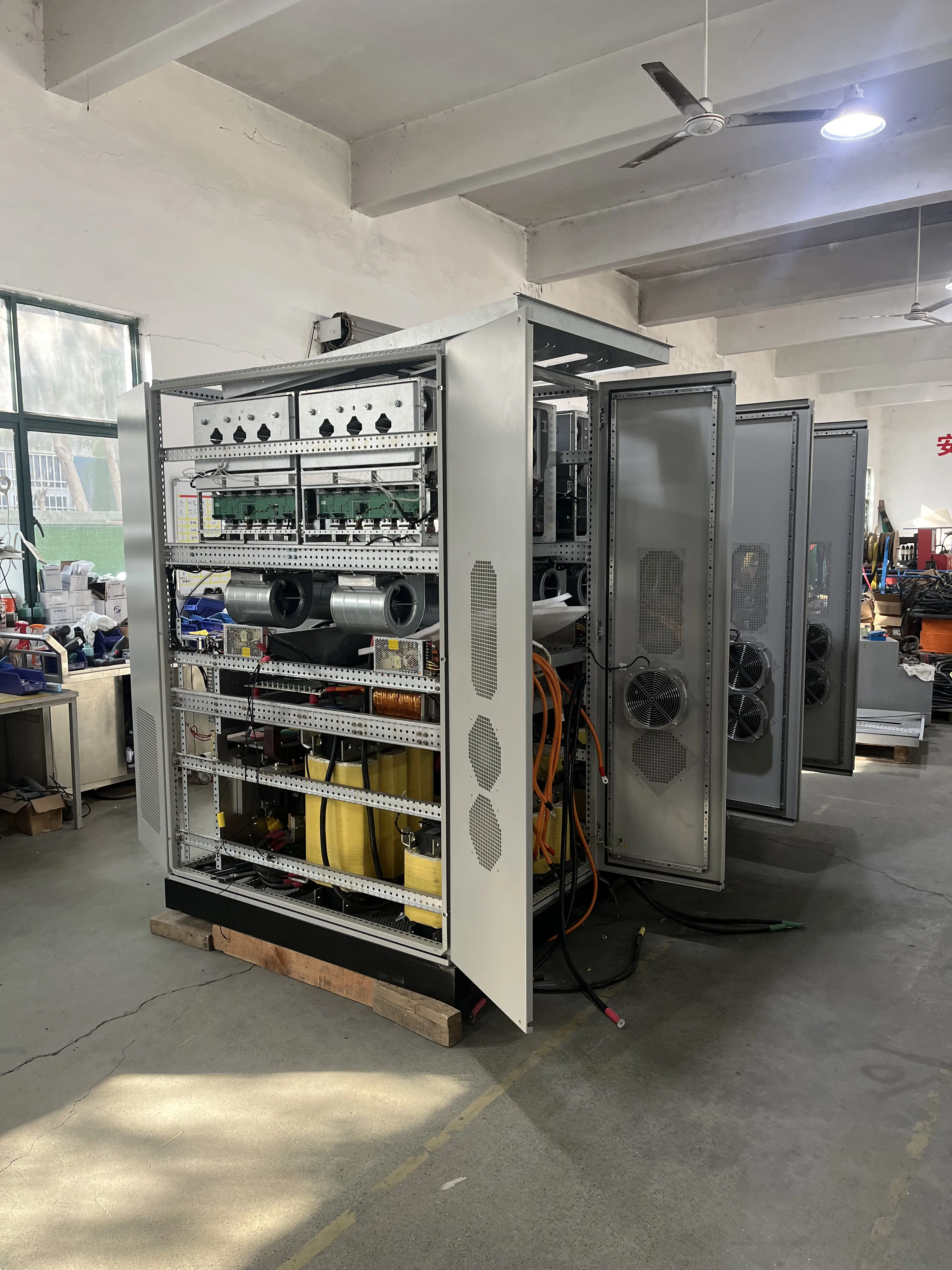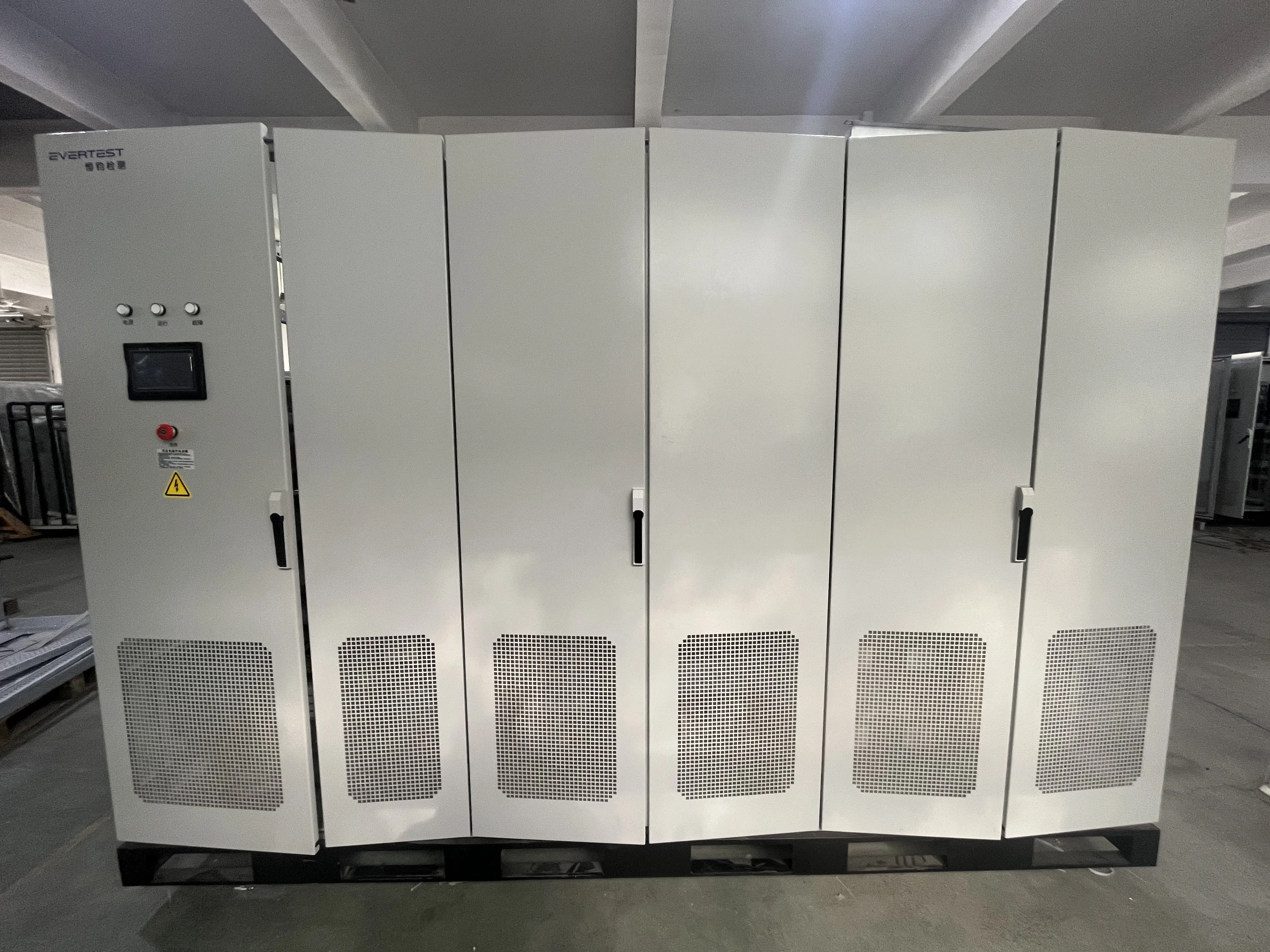Mengselaraskan Sistem Turbin dengan Teknologi Penukaran Pintar
Taman angin moden dan pemasangan turbin rumah semakin saling berkaitan dengan teknologi penukaran pintar untuk memaksimumkan hasil tenaga. A Pengubah turbin angin memainkan peranan kritikal dengan menukarkan output AU yang berubah-ubah dari turbin kepada kuasa yang stabil dan serasi dengan sistem grid atau peranti penyimpanan. Memandangkan sifat tidak tetap angin, mengoptimumkan proses penukaran ini menjadi penting untuk meningkatkan keseluruhan kecekapan tenaga boleh diperbaharui.
Dengan mengawal paras voltan, variasi frekuensi, dan pembetulan faktor kuasa, sebuah Pengubah turbin angin tidak sahaja meratakan penghantaran kuasa malah turut melindungi komponen sistem. Memandangkan turbin menghasilkan voltan berubah-ubah berdasarkan kelajuan angin, penukar ini menetapkan output mengikut keperluan piawaian. Selain itu, penukar moden membenarkan kawalan pintar dan pengurusan tork yang responsif, menyelaraskan prestasi turbin dengan keperluan tenaga dan keadaan persekitaran.
Memahami Peranan Penukar Turbin Angin
Bagaimana penukaran meningkatkan kualiti kuasa
Turbin angin menjana tenaga elektrik dengan voltan dan frekuensi yang berubah-ubah disebabkan kelajuan angin yang sentiasa berubah. Tanpa mekanisme yang sesuai, kuasa tidak stabil ini boleh merosakkan infrastruktur grid atau peranti yang disambungkan. Penukar Turbin Angin melakukan kedua-dua proses rektifikasi dan penukaran: menukar AC berubah-ubah kepada DC, kemudian menukarkannya kembali kepada AC yang konsisten pada voltan dan frekuensi tetap. Ini meningkatkan kualiti kuasa dan keserasian dengan sistem penyimpanan tenaga.
Ketenteraan kuasa ini memastikan tenaga dihantar pada frekuensi 50 Hz atau 60 Hz piawaian grid, meminimumkan kehilangan, mengelakkan harmonik, dan melindungi peralatan di bawahnya. Penukar turut menstabilkan voltan, mengurangkan kelip-kelip dan gangguan kuasa.
Kawalan berpandu untuk pelbagai keadaan angin
Adakah penukar hanya memasukkan kuasa ke grid pada keluaran tetap? Tidak lagi. Unit Penukar Turbin Angin Moden merangkumi pengawal berpandu yang membolehkan pelarasan keluaran kuasa berdasarkan keadaan angin. Apabila angin rendah, penukar boleh memaksimumkan pengeluaran kuasa dengan mengubah voltan dan arus keluaran. Apabila angin terlalu kencang, penukar melindungi mekanik turbin dengan mengekang keluaran atau melipatkan bilah.
Pelanlapan dinamik ini meningkatkan pengumpulan tenaga, mengelakkan tekanan mekanikal, dan meningkatkan jangka hayat turbin. Gelung kawalan membolehkan turbin beroperasi lebih dekat dengan lengkung kuasa optimumnya pada julat kelajuan angin yang lebih luas.

Keuntungan kecekapan menerusi Reka Bentuk Penukar Moden
Mengurangkan kehilangan penukaran
Keputusan yang tidak cekap menyebabkan kehilangan tenaga sebagai haba atau anjakan harmonik. Reka bentuk Penukar Turbin Angin Lanjutan menggunakan IGBT berkualiti tinggi, transistor karbida silikon, atau penerus segerak yang mengurangkan kehilangan pengaliran dan pensuisan. Teknik pensuisan lembut seterusnya mengurangkan kehilangan dengan meminimumkan tindih voltan dan arus semasa peralihan pensuisan.
Apabila kehilangan penjanaan menurun daripada, katakanlah, 4% kepada kurang daripada 1%, jumlah keuntungan tenaga keseluruhan dalam pemasangan turbin berperingkat besar menjadi signifikan. Bagi turbin individu, jimat tersebut meningkat dari semasa ke semasa, menambahkan output tenaga tahunan.
Meningkatkan jangka masa dan kebolehpercayaan sistem
Penukar yang bertindak balas dengan cepat terhadap kegagalan grid, peristiwa laluan voltan rendah, atau tiupan angin yang mengejut melindungi kedua-dua elektronik turbin dan turbin itu sendiri. Penukar Turbin Angin merangkumi ciri-ciri anti-pengasingan, protokol laluan kegagalan, dan strategi penyejukan yang pintar. Ciri-ciri ini mengurangkan masa pemberhentian dan mengelakkan kehilangan pengeluaran yang disebabkan oleh penutupan yang kerap.
Memandangkan penukar bertindak sebagai penampan antara turbin dan grid, gangguan mengejut tidak mematikan turbin secara tidak perlu. Ketersediaan yang lebih tinggi bermaksud penghantaran tenaga yang lebih konsisten dan pulangan pelaburan yang lebih baik.
Penggabungan dengan Penyimpanan dan Infrastruktur Grid
Keserasian dengan sistem bateri
Sistem boleh diperbaharui sering bergantung kepada penyimpanan bateri untuk meratakan bekalan. Penukar Turbin Angin yang diintegrasikan dengan sistem penyimpanan boleh mengecas bateri secara langsung daripada arus terus (DC) atau arus ulang-alik (AC) yang dijana oleh turbin. Penukar pintar menguruskan kadar pengecasan, tahap casan bateri, dan koordinasi hibrid antara grid dan penyimpanan.
Antara muka tanpa putus ini meningkatkan kecekapan keseluruhan sistem semasa tempoh angin lemah atau gangguan pada grid, serta membantu mengurangkan pembaziran penjanaan berlebihan.
Kepatuhan grid dan perkhidmatan sokongan
Kod dan peraturan grid sering memerlukan sokongan kuasa reaktif, kawalan voltan atau kawalan frekuensi. Pengubah Turbin Angin Pintar boleh bertindak balas terhadap isyarat grid, menyediakan perkhidmatan sampingan seperti pampasan voltan atau kuasa reaktif. Perkhidmatan ini membantu mengekalkan kestabilan grid dan boleh meningkatkan pendapatan melalui kontrak sokongan grid.
Pengubah yang menyokong penggabungan sedemikian membolehkan penyambungan grid yang lebih lancar, meningkatkan kebolehpercayaan keseluruhan sistem, serta membenarkan pemasangan turbin menyumbang secara positif kepada rangkaian tenaga tempatan.
Skalabiliti dan Konfigurasi Modular
Menyesuaikan saiz pengubah dengan kapasiti turbin
Penukar turus tersedia dalam pelbagai kapasiti yang dipadankan dengan penarafan kuasa turbin. Memilih penukar yang terlalu besar atau terlalu kecil boleh menjejaskan kecekapan. Penukar Turbin Angin yang dipadankan dengan betul memastikan turbin dan penukar beroperasi dalam lengkung kecekapan optimum mereka, mengurangkan kehilangan pada masa senggang dan mengelakkan risiko beban berlebihan.
Penukar bermodul yang boleh diskalakan juga membenarkan pengembangan kapasiti secara berperingkat apabila turbin tambahan ditambahkan ke dalam ladang angin. Penskalaan ini memberikan fleksibiliti pemasangan dan kawalan kos.
Reka bentuk bermodul untuk pelaksanaan berperingkat
Alih-alih memasang satu penukar besar tunggal, bank penukar bermodul boleh diterapkan untuk memadankan kapasiti turbin secara bertahap. Satu modul Penukar Turbin Angin boleh diterapkan untuk satu atau dua turbin, dan modul tambahan boleh disambungkan apabila turbin baru beroperasi.
Pendekatan bermodul ini memudahkan pemasangan, penyelenggaraan, dan peningkatan pada masa hadapan. Ia selari dengan strategi pengembangan ladang tenaga boleh diperbaharui dan menyokong pelaburan modal berperingkat.
Ciri Pintar dan Keupayaan Pemantauan
Pemantauan Prestasi Real-time
Sistem Penukar Turbin Angin Moden dilengkapi dengan papan pemuka pemantauan, capaian jauh, dan analisis masa sebenar. Operator boleh melihat voltan input, arus output, kecekapan penukaran, suhu persekitaran, dan amaran kegagalan.
Penglihatan ini membolehkan penyelenggaraan berjangka, penyelesaian masalah yang cekap, dan pengoptimuman hasil tenaga. Dengan menganalisis data penukar, operator boleh memperbaiki kawalan incu turbin, mengurangkan jangka masa pemberhentian, dan mengenal pasti kejanggalan prestasi lebih awal.
Algoritma perlindungan dan kawalan automatik
Penukar kini sering mempunyai logik terbenam untuk perlindungan kegagalan, had arus berlebihan, dan penselarasan grid. Penukar Turbin Angin boleh secara automatik memutuskan elektronik turbin semasa keadaan tidak normal, menetapkan pencetus penutupan selamat, dan menyelaraskan semula apabila keadaan kembali normal.
Kawalan automatik ini mengurangkan campur tangan manual, meningkatkan keselamatan, dan mengekalkan operasi berterusan walaupun dalam keadaan grid atau turbin yang berubah-ubah.
Pertimbangan Alam Sekitar dan Pemeliharaan
Pengurusan haba dan ketahanan persekitaran
Dalam pemasangan turbin jauh, keadaan persekitaran boleh berbeza secara meluas. Penukar Turbin Angin yang direka dengan baik merangkumi sinki haba yang kukuh, sensor suhu, dan sistem penyejukan kipas atau cecair untuk mengekalkan suhu operasi yang selamat.
Dalam persekitaran yang keras—seperti di kawasan pesisir, gurun, atau lepas pantai—kotak penukar melindungi komponen dalaman daripada habuk, kelembapan, dan kakisan garam. Ketahanan ini memperpanjang jangka hayat komponen dan mengekalkan kecekapan penukaran sepanjang masa.
Mempermudah penyelenggaraan dan pengurusan kitar hayat
Penukar dengan modul tanam-dan-main, keupayaan tukar-panas, dan komponen piawaian memudahkan keperluan penyelenggaraan. Penukar Turbin Angin yang menyokong penggantian modular memastikan pembaikan yang cepat dan jangka masa pemberhentian yang minimum.
Reka bentuk yang mesra perkhidmatan juga menyokong kemaskini firmware, diagnosis jauh dan penggantian komponen tanpa perlu membongkar keseluruhan sistem turbin. Kemudahan ini mengurangkan kos operasi dan memperpanjangkan jangka hayat fungsian sistem.
Adakah Pelaburan pada Penukar yang Betul Berbaloi?
Pulangan menerusi peningkatan hasil tenaga
Walaupun peningkatan kecil dalam kecekapan penukaran boleh diterjemahkan kepada keuntungan bermakna dalam hasil tenaga boleh diperbaharui sepanjang tahun. Jika Penukar Turbin Angin yang lebih pintar dan berkurangan kehilangan tenaga dapat menambah 2% lagi output yang boleh digunakan, peningkatan tersebut menjadi sangat besar dalam tempoh masa dan skala yang lebih besar.
Menghubungkan turbin angin kepada penukar yang bersaiz sesuai dan berkecekapan tinggi sering kali memberikan pulangan yang lebih cepat kepada pelaburan modal dan kos tenaga seunit (LCOE) yang lebih rendah.
Menyokong interaksi grid dan mempersiapkan untuk masa depan
Seiring dengan perkembangan grid, adalah dijangka bahawa sistem penjanaan tersebar akan memberikan lebih banyak perkhidmatan grid. Penggunaan Pengubah Turbin Angin dengan fungsi pintar akan memberi kedudukan turbin angin untuk penyertaan dalam grid masa depan.
Sama ada menyokong kawalan frekuensi, imbangan kuasa reaktif, atau kawalan voltan, pengubah pintar membolehkan sistem tenaga boleh diperbaharui memberi nilai tambah selain daripada pengeluaran kWh semata-mata. Kelenturan ini mungkin membuka sumber pendapatan baru dan memberi integrasi yang lebih baik dengan sistem tenaga pada masa hadapan.
Meningkatkan Penggunaan Tenaga Boleh Diperbaharui pada Setiap Skala
Dari sistem kecil di rumah sehingga ke ladang angin komersial
Pengubah Turbin Angin adalah sama pentingnya bagi pengguna rumah dengan turbin kecil dan juga ladang berskala utiliti. Bagi sistem domestik, pengubah yang direka bentuk untuk turbin 5 kW memastikan bekalan kuasa yang bersih ke rumah atau mikrogrid. Bagi sistem yang lebih besar, pengubah berkapasiti megawatt menyelaras tatasusunan turbin yang kompleks.
Tidak kira skala, peranan penukar adalah sama: untuk mengoptimumkan penghantaran tenaga, melindungi elektronik, dan menyelaraskan penjanaan dengan permintaan.
Menghubungkan penjanaan yang tidak sekata dengan corak permintaan
Angin adalah tidak sekata, tetapi corak permintaan berubah setiap hari. Penukar Turbin Angin membantu menyelaraskan penjanaan dengan penggunaan tempatan dengan menstabilkan output dan menyepadukannya dengan sistem storan atau grid. Sinergi ini mengurangkan pemotongan dan meningkatkan tenaga yang boleh digunakan yang dihantar kepada pengguna.
Penukar pintar juga menyokong pengoptimuman mengikut masa penggunaan, mengalihkan penjanaan untuk menepati puncak penggunaan dan mengurangkan pembaziran tenaga.
Soalan Lazim
Apakah fungsi utama Penukar Turbin Angin
Ia menukar arus ulang-alik (AC) yang berubah-ubah dan tidak stabil dari sebuah turbin angin kepada arus ulang-alik atau terus (DC) yang stabil pada voltan dan frekuensi piawai untuk kesesuaian dengan grid atau storan.
Adakah penukar sebenarnya boleh meningkatkan kecekapan sesebuah turbin
Ya. Dengan meminimumkan kehilangan penukaran, menguruskan penghantaran kuasa secara aktif, dan menyesuaikan diri dengan keadaan angin, penukar boleh meningkatkan keseluruhan kecekapan tenaga boleh diperbaharui.
Adakah Penukar Turbin Angin diperlukan untuk turbin kecil perumahan
Sudah tentu. Turbin kecil pun menghasilkan kuasa yang tidak sekata. Penukar yang sesuai adalah penting untuk keselamatan, kesesuaian, dan memaksimumkan penggunaan tenaga.
Bagaimana saya memilih penukar berkapasiti betul untuk sistem angin saya
Kira keluaran tertentu turbin anda dan keadaan angin biasa, kemudian pilih penukar yang bersaiz sedikit lebih tinggi daripada kapasiti turbin. Pilihan penukar modular memberi ruang untuk pengembangan pada masa hadapan.
Jadual Kandungan
- Mengselaraskan Sistem Turbin dengan Teknologi Penukaran Pintar
- Memahami Peranan Penukar Turbin Angin
- Keuntungan kecekapan menerusi Reka Bentuk Penukar Moden
- Penggabungan dengan Penyimpanan dan Infrastruktur Grid
- Skalabiliti dan Konfigurasi Modular
- Ciri Pintar dan Keupayaan Pemantauan
- Pertimbangan Alam Sekitar dan Pemeliharaan
- Adakah Pelaburan pada Penukar yang Betul Berbaloi?
- Meningkatkan Penggunaan Tenaga Boleh Diperbaharui pada Setiap Skala
- Soalan Lazim



